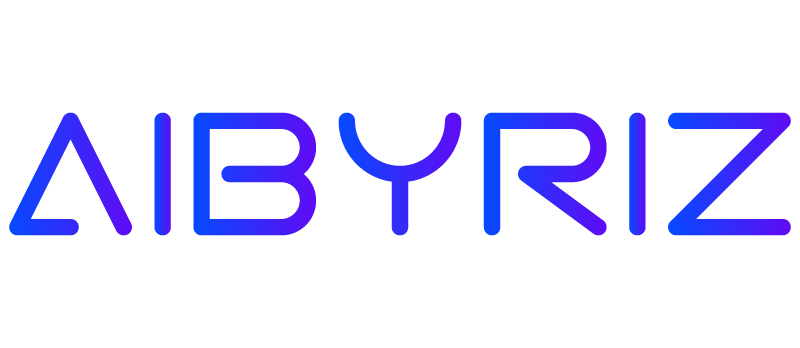AI has created a major shift in corporate learning. About 83% of organisations currently use or plan to implement AI-powered learning platforms. Businesses face new challenges in employee development. AI integration helps create expandable training programmes that work. Traditional corporate learning methods combined with AI technology provide affordable solutions to optimise training.
AI-driven systems help companies deliver tailored learning experiences that adapt to each employee’s learning style and priorities. This piece explores how organisations can apply AI in their training programmes. It covers everything from content creation and administrative tasks to ethical concerns. Leaders will find applicable information about AI-powered tools that help them retain control while keeping the human element in their learning and development plans.
Leveraging AI for Personalised Learning Experiences
AI revolutionises corporate learning by knowing how to deliver tailored learning experiences that adapt to individual needs and priorities. AI-powered learning platforms analyse learner behaviour patterns and create custom learning trips that boost training effectiveness substantially.
AI-powered content recommendations
AI algorithms have transformed the way employees find and participate in learning materials. These systems create smart content recommendations that match specific roles, learning styles, and career aspirations by analysing previous learning patterns and employee behaviour. Research indicates AI-powered chatbots provide tailored guidance with 91% accuracy 1. These chatbots are a great way to get insights in corporate learning environments.
AI-driven recommendations go beyond simple course suggestions. These systems can:
- Predict future skills gaps through analytics
- Suggest content that develops specific skills
- Update recommendations as learning progresses
- Provide additional resources to build complete understanding
Adaptive learning paths
Adaptive learning stands as the most important advancement in tailored corporate training. A solid foundation supports every well-built structure, and adaptive learning systems work the same way. These systems first check an employee’s current knowledge level before building on it. Students who use adaptive learning programmes showed a remarkable 62% increase in test scores 1. This proves how well this approach works.
The adaptive learning paths work through these steps:
- Original assessment of employee knowledge and skills
- Creation of tailored learning objectives
- Dynamic content delivery based on progress
- Continuous adjustment of difficulty levels
- Regular feedback and performance evaluation
Real-time performance tracking and feedback
AI systems excel at delivering instant, constructive feedback that keeps employees aligned with their learning goals. These platforms use machine learning algorithms to analyse employee data, performance metrics, and skills assessments. The analysis reveals specific areas where employees can improve 2.
Learning and development professionals can make evidence-based decisions about training initiatives through live tracking features. The AI systems watch learner interactions and adjust content difficulty automatically. Employees stay challenged yet comfortable with the material. This adaptable method keeps them interested while maximising their learning potential.
Docebo, a leading AI-powered learning platform, shows these concepts at work. The platform provides adjustable learning paths, instant feedback, and individual-specific content suggestions that boost employee engagement and retention 3. Organisations can build learning experiences that adapt to each person’s needs while following corporate training standards.
Enhancing Content Creation with AI
Corporate learning’s development has reached an exciting new phase. AI-powered content creation tools reshape the scene of organisational training material development and delivery. Studies reveal that 82% of marketers find AI-generated content matches or exceeds human-created content quality 4. This is a big deal as it means that AI holds remarkable promise for corporate learning environments.
Automated content generation tools
Organisations now find AI-powered content creation tools save significant time. Recent studies suggest these tools cut development time by up to 98% for instructional design tasks 5. AI systems create a wide range of learning materials, including:
- Course outlines and objectives
- Interactive assessments and quizzes
- Scenario-based learning exercises
- Individual-specific learning pathways
- Knowledge base articles
AI-assisted translation and localization
AI has transformed the way organisations deliver training to their global audiences. Modern AI translation tools now reach accuracy levels never seen before. These advanced language models can preserve context and cultural nuances effectively 6. Organisations can implement this technology through five key steps.
The process starts with content analysis and preparation. Teams then use AI-powered translation with custom models. The next step adapts content to match cultural context. A quality assurance review follows to check accuracy. The final step refines the localised content for perfect delivery.
Quality control and human oversight
AI brings remarkable capabilities to content creation, but quality control needs a balanced approach. Studies show that 89% of AI engineers have faced accuracy issues or “hallucinations” in AI-generated content 7. Human oversight plays a vital role in this process. Many organisations now follow the “80/20 approach.” They let AI handle 80% of the original content creation and dedicate 20% to human refinement and quality control 5.
A resilient infrastructure for quality control determines the success of AI in content creation. Writer and AI platforms of all types help organisations stay consistent by adding in-house style guides and brand requirements 5. Your content will strike a chord with organisational standards while you retain control over the human elements that learners value.
Corporate learning professionals can scale their content creation process with AI tools without sacrificing quality. Organisations can create engaging, individual-specific experiences that strike a chord with audiences in a variety of global markets by blending AI efficiency with human expertise.
Using AI to Streamline Administrative Tasks
Administrative tasks take up precious time that L&D teams could dedicate to strategic learning initiatives in today’s ever-changing corporate environment. AI solutions transform the way these teams manage their administrative workload and create training programmes that work better.
Automated scheduling and resource allocation
AI-powered scheduling assistants have changed the way organisations manage resources in corporate learning. These systems cut down scheduling time by 10-15 minutes per meeting 8 and optimise resource distribution across training programmes. AI brings several key benefits to resource allocation:
- Efficient automated processes
- Evidence-based decision-making
- Better resource utilisation
- Lower costs by reducing waste
- Smooth collaboration through connected features 9
Modern AI scheduling tools learn from patterns and priorities. They suggest the best times for training sessions and take into account time zones and when people are free 8. This automation helps learning programmes run without the usual administrative hassles.
Intelligent chatbots for learner support
AI chatbots have transformed learner support in corporate training environments. McKinsey reports suggest these chatbots could boost workplace productivity by GBP 109.99 billion annually 10. Organisations like KPMG have shown remarkable results – their AI chatbot now handles over 1.2 million employee queries each year 10.
The implementation of chatbots follows these key steps:
- 24/7 availability for instant support
- Natural language processing for understanding queries
- Individual-specific responses based on learner profiles
- Continuous learning and improvement
- Integration with existing learning systems
Informed programme management
AI processes and analyses learning data to revolutionise corporate training’s programme management. These systems track performance metrics, spot trends, and provide useful information for decisions 11. Learning managers can predict outcomes, spot potential bottlenecks, and enhance programme delivery before problems occur by utilising AI’s predictive analytics.
AI’s influence on programme management goes beyond simple analytics. Machine learning models calculate risk probabilities and effects, while natural language processing scans project documents to detect risks 11. Learning managers can make informed choices about programme changes and improvements through this proactive method.
L&D teams plan and execute workforce development better with AI-powered features 12. These tools handle routine tasks and offer sophisticated analytics that give learning professionals more time to concentrate on strategic initiatives and learner interactions. Both administrators and participants benefit from this streamlined, informed approach to corporate learning.
Addressing Ethical Considerations and Challenges
Organisations now accept AI-powered learning platforms, and their attention moves naturally toward the ethical implications and challenges of this technological transformation. A recent study highlights an important disconnect between management and employees. While 85% of cyber risk owners feel confident about implementing AI policies, only 34% of employees know these policies exist 13.
Data privacy and security concerns
AI integration in corporate learning creates new security challenges, especially when systems process sensitive employee information. Recent studies show that 62% of workers use AI tools without proper authorisation 13. This situation demands reliable security measures. Organisations need to implement detailed security protocols that include:
- Data encryption and access controls
- Regular security audits and compliance checks
- Employee training on data protection
- Secure API integration protocols
- Incident response planning
Security risks remain high as 43% of employees face cyber attacks at work 13. Companies must focus on data minimization and establish strong cybersecurity measures designed for AI-driven learning platforms.
Mitigating AI bias in learning algorithms
AI bias creates one of the most important challenges in corporate learning that can lead to unfair treatment and discriminatory outcomes. Research shows that algorithmic bias creates systematic discrimination and affects everything from content recommendations to assessment evaluations 14. Organisations should take these steps to deal with these issues:
- Implement diverse and inclusive training datasets
- Regular audit of AI algorithms for fairness
- Establish clear protocols for bias detection
- Deploy fairness-aware algorithms
- Maintain transparent documentation of AI decisions
Bias can sneak into algorithms through many channels, including biassed training data and flawed data sampling 15. Counterfactual fairness techniques will give AI models the ability to make consistent decisions whatever the sensitive attributes like race, gender, or sexual orientation 15.
Balancing AI automation with human interaction
AI brings remarkable efficiency to corporate learning, but the human element remains significant. Research shows that human intervention becomes necessary in situations requiring emotional intelligence 16. Success depends on creating a cooperative relationship between AI and human facilitators.
Employee training on AI tools improves efficiency and protects against misuse that could compromise data privacy and security 17. Companies need to build a culture of accountability and transparency where AI increases rather than replaces human interaction.
Modern organisations face the task of keeping human elements central to learning while making use of AI’s capabilities 16. This balance becomes especially important when handling upset learners or complex situations that need emotional intelligence. A “human-in-the-loop” approach works well, where humans can review and confirm AI system recommendations 15.
Organisations should prioritise these elements to encourage proper balance:
- Regular ethics training and ongoing audits of AI systems
- Clear protocols for escalating AI-related concerns
- Open dialogue about AI’s applications and limitations
- Continuous monitoring of AI-human interaction effectiveness
Effective AI integration needs a deep understanding of both technological capabilities and human needs. Organisations can create learning environments that make use of AI’s power while preserving essential human elements through resilient security measures, addressing algorithmic bias, and maintaining meaningful human interaction. These elements help corporate learning work effectively.
To Sum Up
AI technology has transformed corporate learning and offers new ways to customise, streamline, and scale training programmes. Organisations reap benefits from AI-powered systems that deliver customised learning experiences, create high-quality content, and handle administrative tasks efficiently. These breakthroughs work alongside human oversight to build resilient learning environments that adapt to each person’s needs while upholding educational standards. Success stories from industries of all types show how smart AI deployment improves employee development and addresses significant ethical concerns.
Corporate learning’s future depends on balancing technological breakthroughs with human connection effectively. Smart organisations know that AI works best as a tool to increase human capabilities rather than replace them completely. Companies that adopt this balanced approach succeed by prioritising data security and algorithmic fairness while keeping meaningful human interactions intact. These organisations position themselves to propel development in an evolving digital world. Their achievements prove that thoughtful AI integration creates more engaging, efficient, and inclusive corporate learning environments for all participants.
FAQs
How can managers utilise AI in their roles?
AI can be employed in various managerial tasks such as monitoring social media to track users, target content, and identify trends. In content creation and learning, AI can generate both written and visual content effectively when provided with appropriate prompts. Additionally, it enhances learning experiences by summarising complex information and creating interactive elements like quizzes.
What are the essential steps to implement AI in a company?
To successfully implement AI in your organisation, follow these key steps:
- Clearly define your goals and objectives.
- Identify the appropriate data sources.
- Select suitable AI tools and technologies.
- Develop a robust data strategy.
- Invest in training and education for your team.
- Start with small projects and gradually scale up.
- Regularly monitor performance and make necessary adjustments.
In what ways is AI used in managerial functions?
AI significantly enhances business management by enabling data-driven decision-making. It processes and analyses large volumes of data swiftly, providing managers with actionable insights. This helps in making informed decisions, staying ahead of market trends, and understanding customer demands more effectively.
How can AI be utilised in business management?
AI offers numerous advantages in business management, including:
- Enhanced customer engagement and experience.
- In-depth data analysis and insights.
- Increased automation and efficiency in business processes.
- Improved operations in accounting, customer service, IT, and legal departments.
- Advanced capabilities in financial analysis, trading, and fraud detection.
References
[1] – https://claned.com/the-role-of-ai-in-personalised-learning/
[2] – https://www.edstellar.com/blog/ai-in-corporate-training
[3] – https://www.vevox.com/blog/10-ai-tools-to-revolutionise-employee-training
[4] – https://divvyhq.com/content-automation/how-to-evaluate-ai-generated-content/
[5] – https://www.intellum.com/resources/blog/16-ai-tools-for-education-content-creation
[6] – https://slator.com/resources/how-to-use-ai-in-translation/
[7] – https://www.wisedocs.ai/blogs/the-importance-of-human-oversight-in-ai-model-training
[8] – https://blog.hubspot.com/sales/ai-scheduling-assistant
[9] – https://dialzara.com/blog/10-ai-tools-for-optimising-resource-allocation/
[10] – https://elearningindustry.com/how-companies-use-ai-chatbots-to-support-on-demand-employee-learning
[11] – https://www.planview.com/resources/articles/using-artificial-intelligence-for-project-management/
[12] – https://360learning.com/blog/harnessing-ai-for-learning-and-development/
[13] – https://itbrief.co.uk/story/ai-policies-poorly-understood-by-employees-raising-uk-risks
[14] – https://online.hbs.edu/blog/post/ethical-considerations-of-ai
[15] – https://hbr.org/2019/10/what-do-we-do-about-the-biases-in-ai
[16] – https://www.linkedin.com/pulse/balancing-ai-automation-human-touch-lou-leporace-dwzjc
[17] – https://bluesignal.com/2024/02/23/ai-and-employee-training-ensuring-safe-use-of-artificial-intelligence-at-work/














